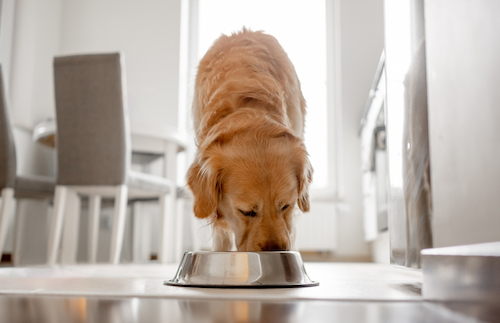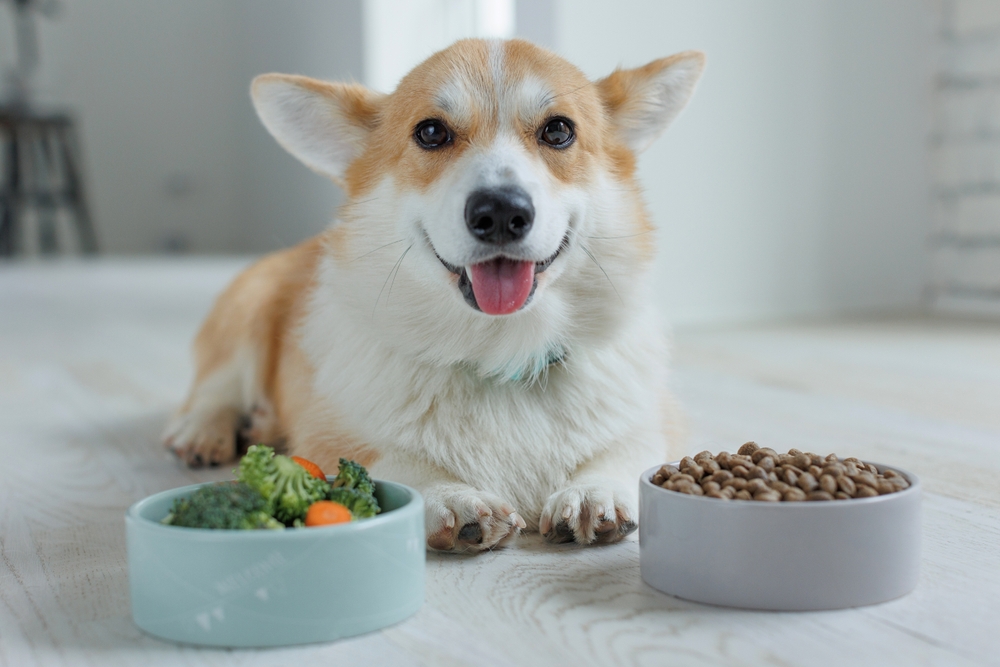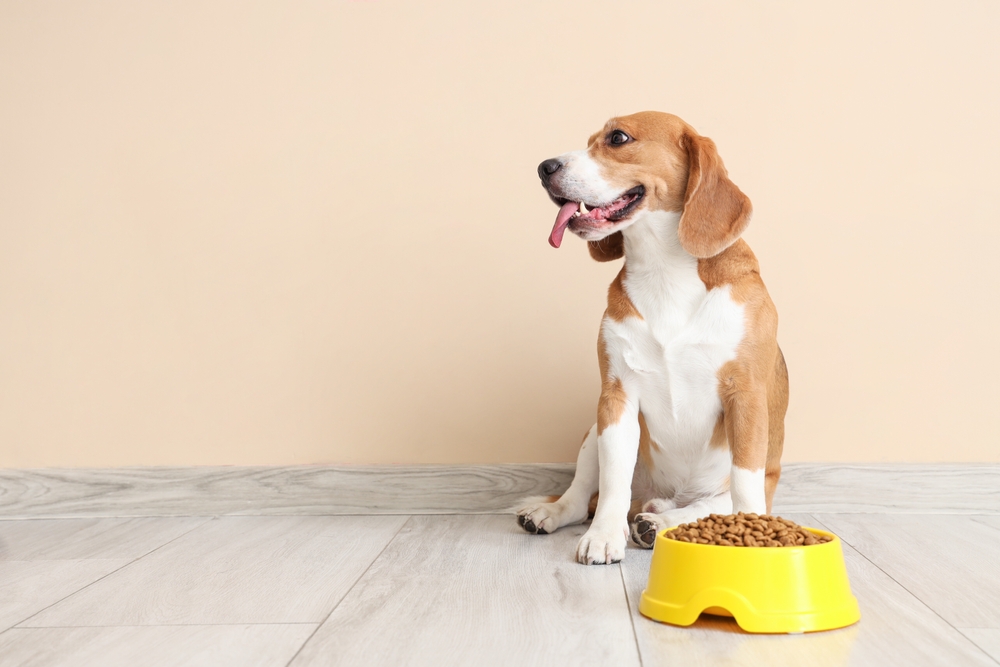6 Best Low-Sodium Dog Foods of 2025
Updated on June 06, 2024

Are you feeding your dog too much sodium? Unless your dog has a diagnosed health condition like cardiovascular or renal disease, the topic of low-sodium dog food isn’t likely to come up in most veterinary visits. But sodium does have a big impact on your dog’s health — both positive and negative — so it’s worth asking the question to ensure your dog’s diet doesn’t contain too much salt.
First off, the good news: As a natural mineral rich in electrolytes, salt can be beneficial to dogs. Salt helps control your dog’s blood pressure and blood volume. It also helps maintain body fluid levels and assists the heart, brain, and muscle function.
But too much salt can be a problem for dogs with certain health issues. And, in that case, low-sodium dog foods could be instrumental when it comes to maintaining your dog’s health. So here’s what you need to know about sodium in dog food, including some top recommendations for low-sodium options.
Our Picks
All featured products are chosen at the discretion of the Vetstreet editorial team and do not reflect a direct endorsement by the author. However, Vetstreet may make a small affiliate commission if you click through and make a purchase.
- Best Dry Low-Sodium Dog Food: Open Farm Harvest Chicken & Ancient Grains Dry Dog Food
- Best Dehydrated Low-Sodium Dog Food: Honest Kitchen Beef Grain-Free Dehydrated Dog Food
- Best Raw Low-Sodium Dog Food: Darwin’s Intelligent Design Kidney Support Formula for Canines
- Best Tasting Low-Sodium Dog Food: ChiDog Water Diet
- Best Low-Carb, Low-Sodium Dog Food: Dr. Harvey’s Paradigm
- Best Human-Grade Low-Sodium Dog Food: Raised Right Beef Adult Dog Recipe
6 Best Low-Sodium Dog Foods
Best Dry Low-Sodium Dog Food
Our Pick: Open Farm Harvest Chicken & Ancient Grains Dry Dog Food
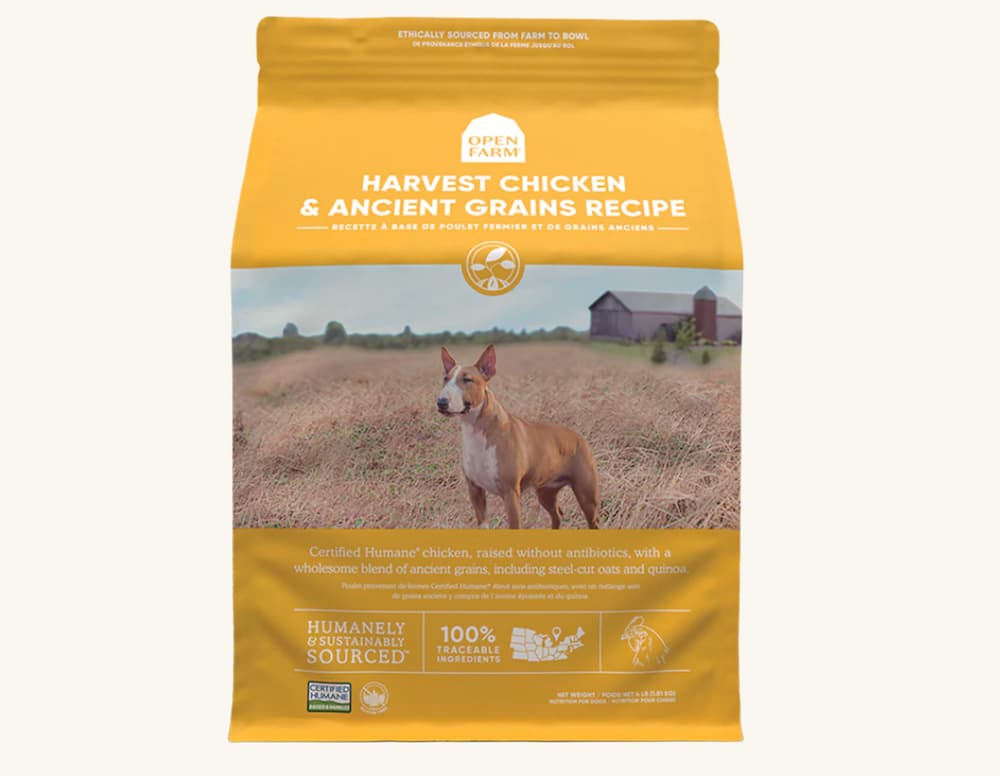
20% off first auto-ship order with code VETSTREET
Open Farm is a great brand that uses humanely raised animals and superfoods in their ingredients. Their recipes are an excellent option for low-sodium diets because they use only the ingredients your dog needs and nothing more. This formula contains ancient grains like millet, quinoa, sorghum, and chia seeds that are rich in both protein and fiber. In addition to low-sodium dry dog food, Open Farm also offers formulas ranging from freeze-dried raw to gently cooked recipes that can be used as a low-sodium dog food option.
Highlights
- Contains 0.31 percent sodium, measured on a dry matter basis
- Made with high-quality ingredients and superfoods
- Humanely raised chickens sourced from family farms
- Contains nutrient-dense ancient grains,
- Made without peas, legumes, or potatoes
- Has many options including low-sodium canned dog food
- Very palatable
Things to Consider
- Pricier than most other kibble brands (but better value)
- Dry dog food may not be appropriate for dogs with kidney disease, due to low moisture content
Best Dehydrated Low-Sodium Dog Food
Our Pick: The Honest Kitchen Beef Grain-Free Dehydrated Dog Food
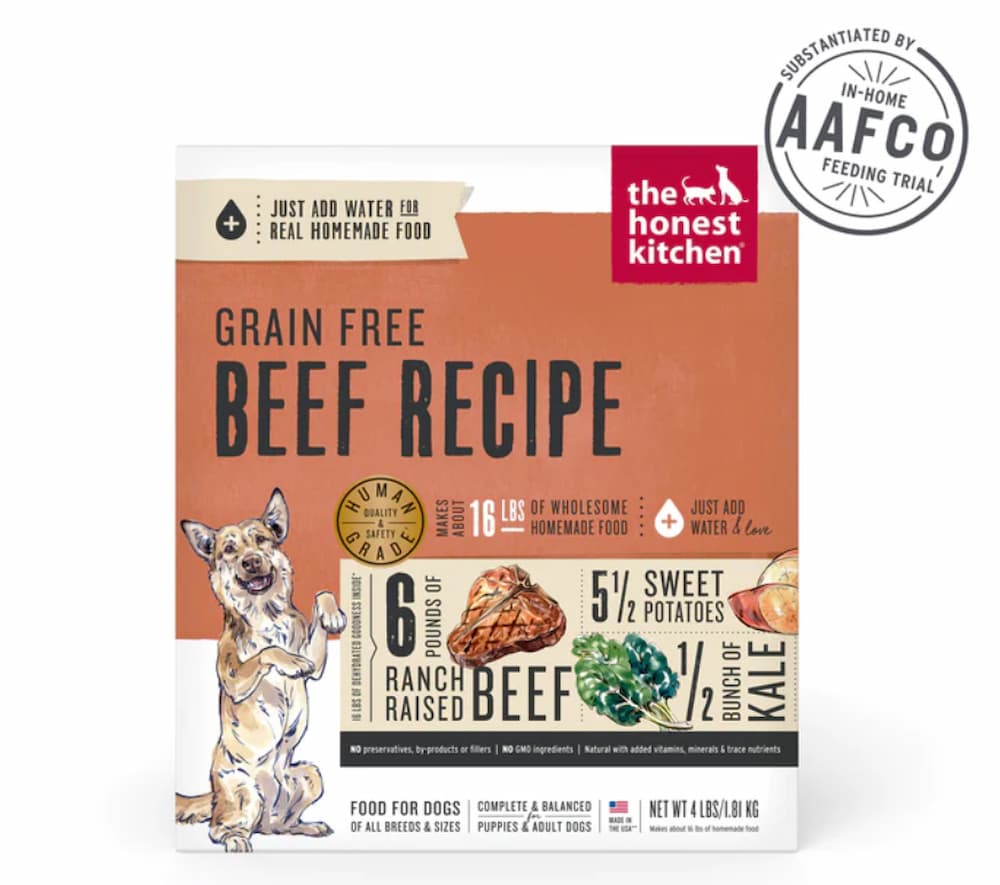
Get 40% off your first purchase at The Honest Kitchen with code 40GREATPET
The Honest Kitchen offers premium ingredients and nutritional benefits in a convenient, easy-to-serve dehydrated formula dogs love. Simply add a bit of warm water to rehydrate, and your dog’s meal will be ready to devour in just a few minutes. This low-sodium recipe is high in protein and made with real, whole food ingredients that are nutritionally complete and balanced, as well as downright delicious.
Highlights
- Contains 0.4 percent sodium, measured on a dry matter basis
- Made without by-products, preservatives, fillers, GMO ingredients, corn, wheat, or soy
- 100% human-grade recipe
- Highly palatable
- Easy to store and serve, even on-the-go
- Low-salt dog food
Things to Consider
- More expensive than kibble
- Creates a slurry oatmeal-like texture
Best Raw Low-Sodium Dog Food
Our Pick: Darwin’s Intelligent Design Kidney Support Formula for Canines
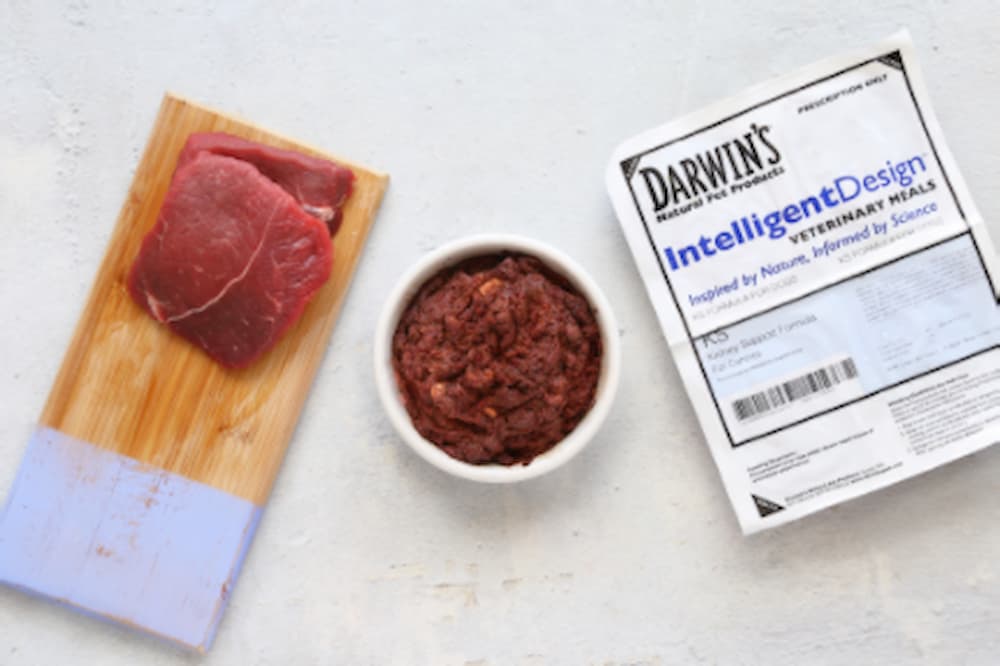
This low-sodium raw dog food recipe from Darwin’s Natural Pet Products is designed specifically to support healthy kidney function. The highly palatable formula contains nutrient-dense ingredients, including appropriate levels of proteins to support muscle maintenance and kidney health. Plus, the recipe is made without pro-inflammatory grains, refined carbohydrates, or high-starch ingredients. Darwin’s Intelligent Design Kidney Support Formula is veterinarian-formulated and available by prescription only. It’s a great option for dogs who are accustomed to fresh food or for pet parents who want to transition from a processed food diet.
Highlights
- Contains 0.46 percent sodium, measured on a dry matter basis
- Species-appropriate diet that does not have any refined carbohydrates
- Healthy, fresh, un-processed, free-range, grass-fed ingredients
- Restricted phosphorus for dogs with kidney disease
- Great source of Omega-3 fatty acids to naturally reduce inflammation
- Increased B vitamin levels
Things to Consider
- Requires a prescription to order
- Brand may be hard to find in pet retail stores
- Higher cost than kibble
- This is a raw food diet, so follow safety recommendations for thawing, serving, and storing
Best Tasting Low-Sodium Dog Food
Our Pick: ChiDog Water Diet
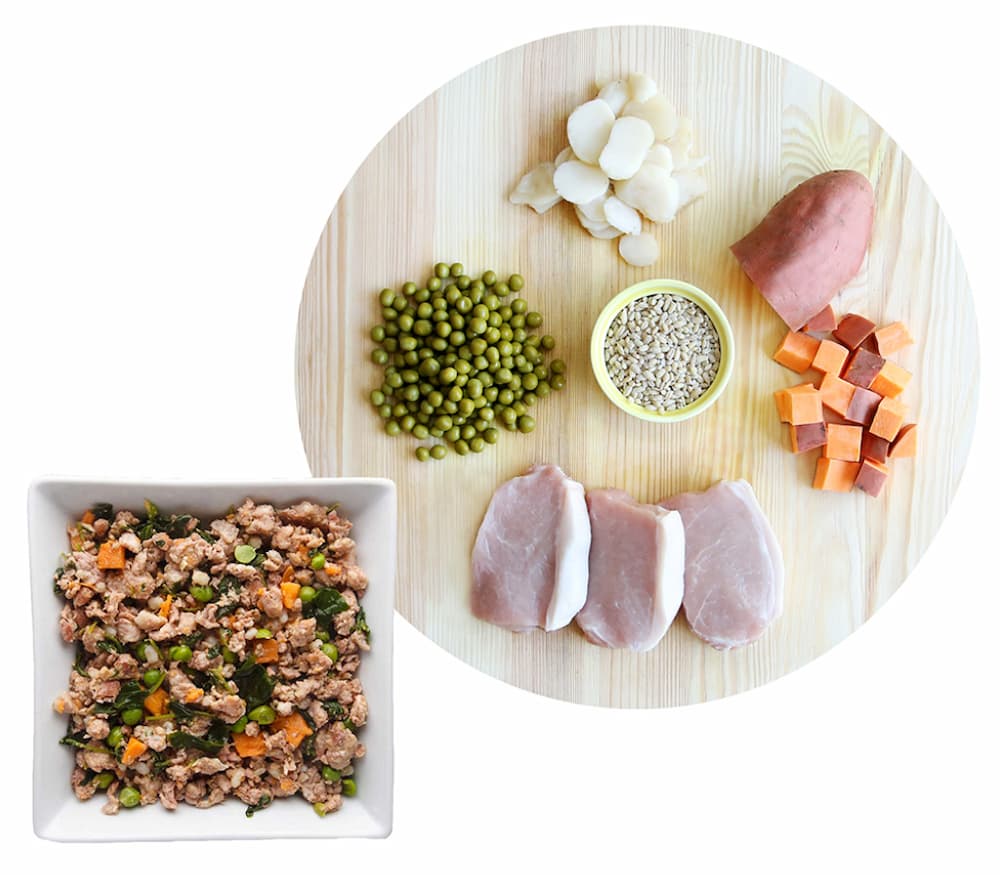
This low-sodium dog food is another great option for dogs because it combines the benefits of fresh ingredients with Eastern medicine philosophies to help your dog feel their best. The recipe is designed according to Chinese food therapy principles to help benefit kidney function, as well as a broad range of health issues, including food allergies, urinary incontinence, and arthritis. ChiDog recipes are developed by an integrative veterinarian, so they’re nutritionally balanced. And the pre-made meals are made with fresh human-grade meats, veggies, and whole grains for a taste dogs love…no extra flavor enhancements like salt required!
Highlights
- Contains 0.33 percent sodium, measured on a dry matter basis
- Uses fresh food ingredients to provide balance and help with health conditions like heart disease
- Made with human-grade ingredients for palate-pleasing flavor
- Uses Chinese food therapy principles to help heal your pet naturally
Things to Consider
- Higher cost than kibble
- Can be mixed in with kibble to add more fresh food to your dog’s diet
Best Low-Carb, Low-Sodium Dog Food
Our Pick: Dr. Harvey’s Paradigm
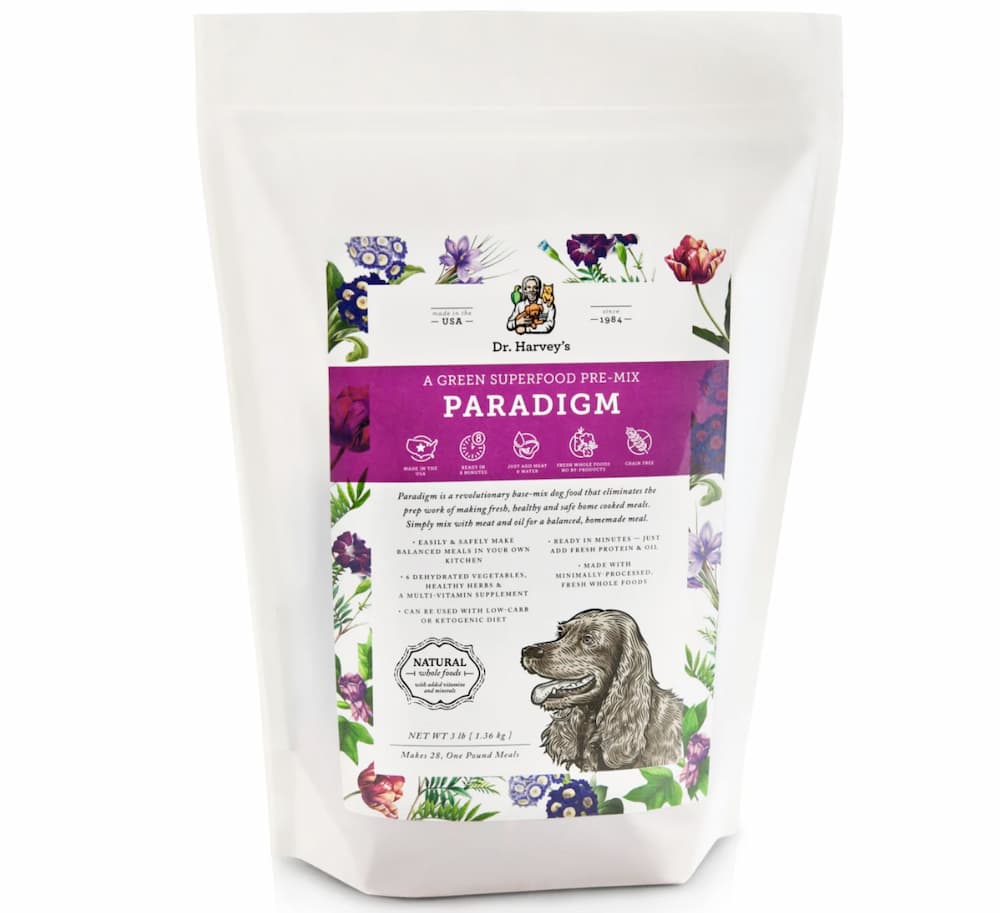
For pet parents who like the idea of homemade dog food, but not the hassle, Paradigm is the perfect solution. This specially blended formula combines an array of “green food” ingredients into a convenient pre-mix base. Just add water and your choice of proteins and fats to serve up a nutritionally balanced meal that’s low-carb, low-sodium, and designed for health and healing.
Highlights
- Contains 0.32 percent sodium, measured on a dry matter basis
- Takes the guesswork out of homemade dog food
- Low-carb dog food may help with issues such as obesity, immune system weakness, and diabetes
- Contains low-glycemic vegetables, antioxidants, vitamins, minerals, and healing herbs
- No grain, no starch, no fillers
- Made with minimally-processed, high-quality ingredients
Things to Consider
- More time-consuming than pre-made food
- Higher cost than kibble
Best Human-Grade Low-Sodium Dog Food
Our Pick: Raised Right Beef Adult Dog Recipe
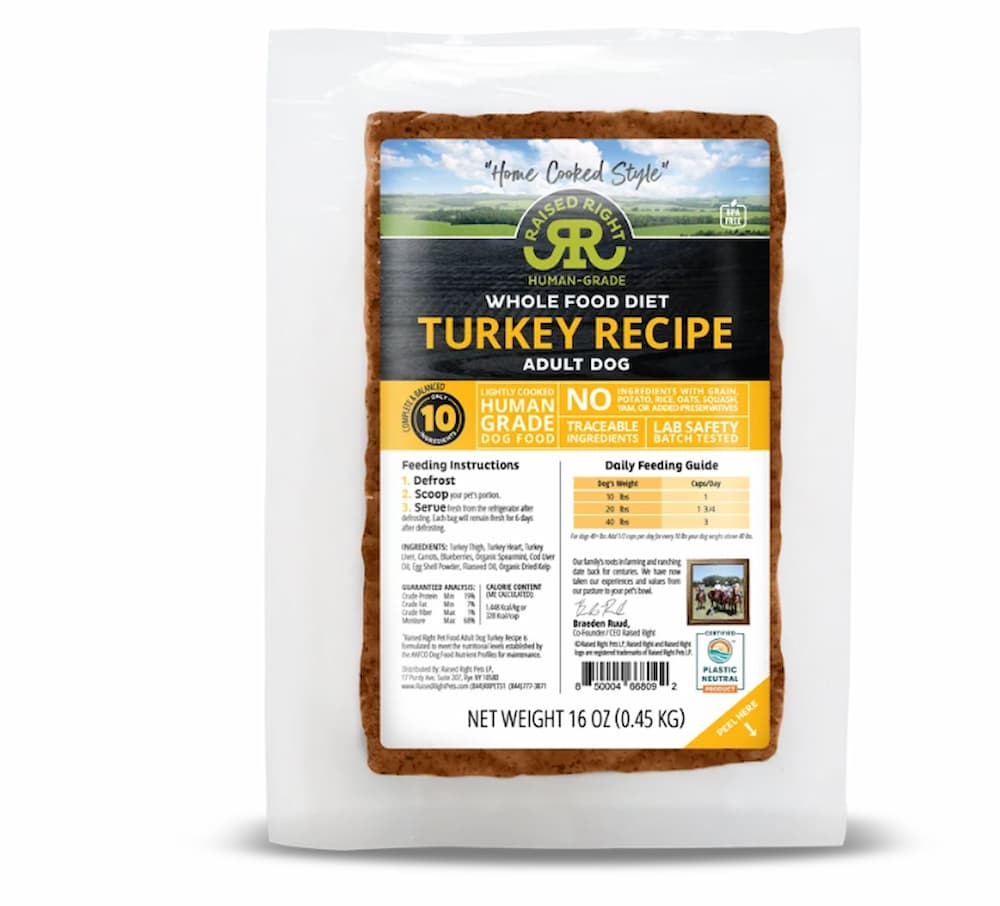
Get 20% off your first 16 bag box with code PETS20
Raised Right is another high-quality, low-sodium dog food, with a beef recipe that contains only .21 percent sodium. Made with fresh premium ingredients that meet the same standards necessary for human consumption, each Raised Right recipe is lightly cooked in a human-grade facility, then frozen for your convenience. Best of all, this food is formulated to meet AAFCO’s requirements for a complete and balanced diet through using ONLY whole foods without having to add any synthetic vitamins and minerals.
Highlights
- Contains 0.21 percent sodium, measured on a dry matter basis
- Low-salt dog food that tastes great due to premium, human-grade ingredients
- Free of carb-heavy fillers like potato, rice, oats, yam, barley, parsnips, corn, or wheat
- Vet-formulated and recommended
- Lightly cooked in a USDA-inspected facility
- Every single batch is lab safety tested
Things to Consider
- More expensive than kibble
- Follow safety recommendations for thawing, serving, and storing
How Much Sodium Does a Dog Need?
According to the National Research Council, which serves as the leading authority on meeting the nutritional requirements of dogs and cats, 200 mg is the recommended daily allowance of sodium for a dog weighing 33 lbs. (1) That’s equivalent to less than a ¼ teaspoon of table salt per day.
However, salt is often added to commercial dog foods to enhance flavor and make recipes more appealing to dogs’ palates. And although the Association of American Feed Control Officials (AAFCO), which sets the nutritional standards for pet foods, has established a minimum requirement for sodium content in dog food of 0.3 percent, it has not set a maximum. As a result, you may find much more salt than your dog needs in some dog foods.
Why You Might Need a Low-Sodium Dog Food
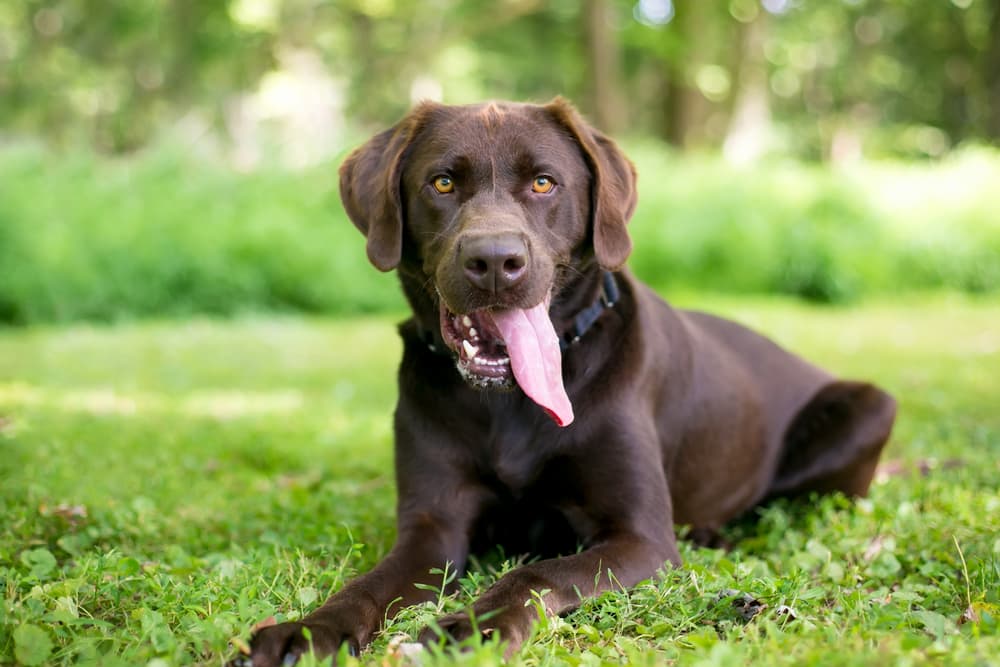
Your veterinarian may recommend a low-sodium dog food if your dog develops certain health conditions. Heart disease and kidney disease are two common conditions that could benefit from feeding a low-sodium diet for dogs, as well as occasional low-sodium dog treats.
In dogs with cardiovascular or kidney disease, excess sodium can build up in the body because the heart or kidney functions are compromised. Just how much (or little) sodium such dogs should consume will depend on the stage of their disease.
In the case of heart failure, reducing sodium levels can help reduce fluid buildup in the lungs, which can ease symptoms of heart disease, such as coughing and breathing difficulties. When it comes to kidney disease, low-sodium food reduces the filtering workload on compromised kidneys. It can also promote normal blood pressure.
Generally, dog food containing maintenance levels of sodium — less than 0.4 percent sodium content — can be fed to pets with early stages of cardiovascular or kidney disease without causing health issues to worsen. To verify how much sodium dog food contains, check the label for nutritional information. Though sodium content is not a labeling requirement, so you may need to contact the manufacturer for such info.
Senior dogs may also benefit from a low-sodium diet, especially fresh, minimally-processed formulas. These make the best low-sodium senior dog food diets because they tend to be full of high-quality ingredients, with vitamins and minerals that are more bioavailable to support your dog’s aging body. Fresh recipes are also the best low-sodium dog food for heart murmurs, which are common in older dogs.
Keep in mind that restricting sodium too much can have adverse effects and can cause blood pressure to increase, especially in dogs without symptoms of heart or kidney disease. So before changing your dog’s food to a fresh food diet or a low sodium diet, make sure to discuss these changes with your veterinarian to ensure your dog is getting sufficient amounts of sodium to meet their health needs.
Low-Sodium Dog Foods to Consider
If your dog has a health condition that could benefit from low-sodium dog food, here are our top recommendations, based on a variety of considerations, including health benefits, brand reputation, reviews, and overall quality.
Low-Sodium Dog Food Buying Guide

When shopping for low-sodium dog food, here are some important tips to keep in mind:
- Generally, your fresh food diets (freeze-dried, lightly cooked, or raw diets) tend to be naturally lower in sodium when compared with kibble options. That’s because salt is often added to dry foods both as a preservative and flavor enhancer.
- Keep in mind that a higher price tag does not necessarily equal higher-quality food. Reviews may provide some helpful insight when it comes to quality and appeal. However, always check pet food labels to ensure protein is listed among the first 3-5 ingredients, like the brands that are recommended here.
- Always look for a statement on the label confirming that the pet food is formulated and balanced according to AAFCO nutritional standards or has undergone feeding trials.
- You can also check the label for information about sodium content. Salt is often listed as sodium chloride, which is what should be minimized for dogs with heart or kidney disease. Instead of sodium chloride, some companies may use potassium chloride, which is a low-sodium form of salt.
- Some dog food manufacturers may list sodium content as a percentage on the recipe’s packaging, or somewhere on their website. This can be helpful when comparing different low-sodium dog foods. However, there’s more to this number than meets the eye.
Sodium content measured on a “dry matter basis” reveals how much sodium is present once all the moisture is eliminated from a serving. That’s the measurement AAFCO uses when creating nutritional standards.
However, sodium content measured “as fed” or “as received” basis includes moisture, which can skew the results. So, unless you know which method was used to calculate a recipe’s sodium content, you could be comparing apples and oranges.
If the food you’re considering doesn’t specify “dry matter” on the product’s packaging or website, call the company to request that information. That could be vital when determining which diet best fits your dog’s needs.
Always confirm with your veterinarian just how much sodium is appropriate for your dog, based on their overall health. However, here are some general guidelines created by Vermont Veterinary Cardiology Services showing how sodium restrictions relate to sodium content in food.(2)
| Degree of Sodium Restriction | Sodium content as a percentage of DRY MATTER |
| MILD sodium restrictions | 0.3 – 0.4 |
| MODERATE sodium restrictions | 0.2 – 0.3 |
| MARKED sodium restrictions | 0.15 – 0.2 |
| EXTREME sodium restrictions | 0.075 – 0.15 |
Low-Sodium Dog Food FAQs
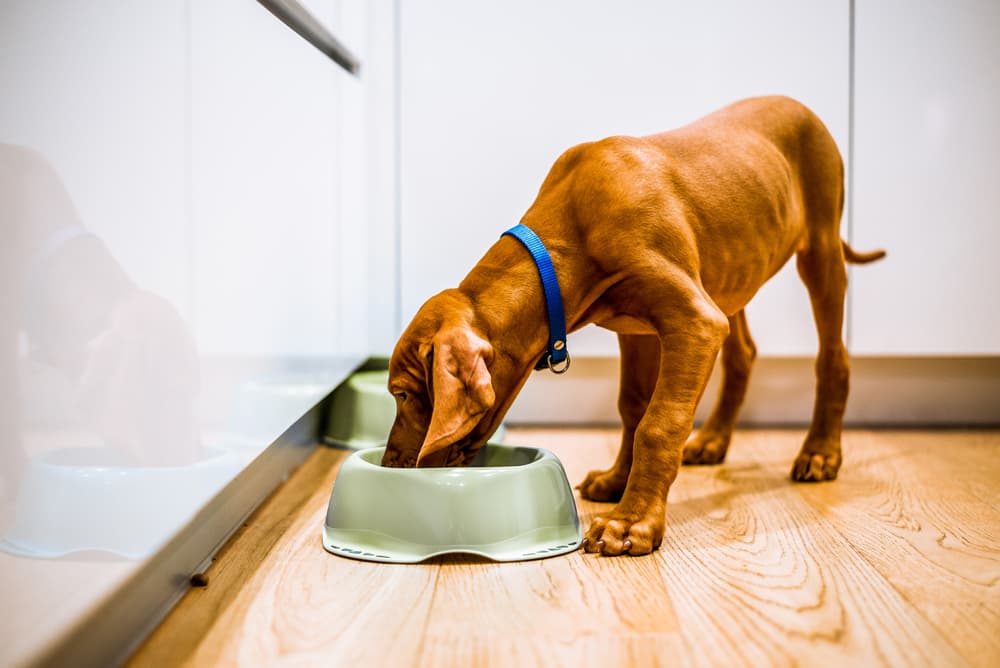
Can dogs eat salt?
Salt, or sodium chloride, is essential to important bodily functions. However, many processed pet foods use too much salt which can adversely impact a dog’s health over the long term. If you’re feeding your dog a homemade diet, a pinch of a good Himalayan salt may be beneficial. But check with your veterinarian to ensure you’re not adding too much or too little salt. If you’re feeding your dog commercial dog food that is already 100% nutritionally balanced, there is no need to add additional salt to their food bowl.
Do dogs need salt in their diet?
Yes, dogs need salt in their diet for optimal muscle, heart, and nerve function and to help regulate fluid balance. But how much salt a dog needs depends on their overall health and current diagnoses. If you have any concerns about sodium in your dog’s diet, talk to your veterinarian about what levels are appropriate for your dog’s health needs.
Does dog food have salt?
Dog foods that meet the AAFCO guidelines for complete and balanced nutrition contain salt since it is a crucial part of maintaining good health. However, unless a dog food is labeled low-sodium, it may contain excessive amounts of sodium, as there is no AAFCO standard for maximum sodium content in dog food.
What is considered a low-sodium dog food?
It is generally recommended to reduce sodium to less than 0.30 percent of dry matter if there are symptoms of heart disease or kidney disease present. This can typically be found in the nutritional information section on a company’s website or can be obtained by calling the company.

